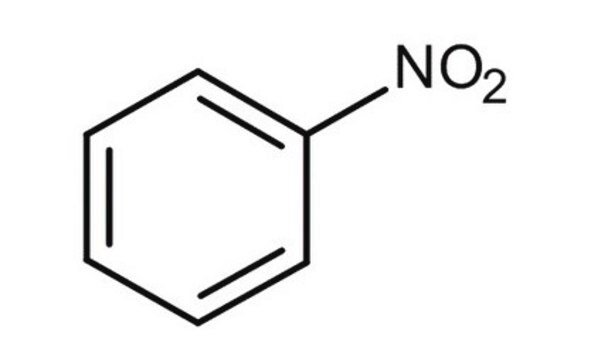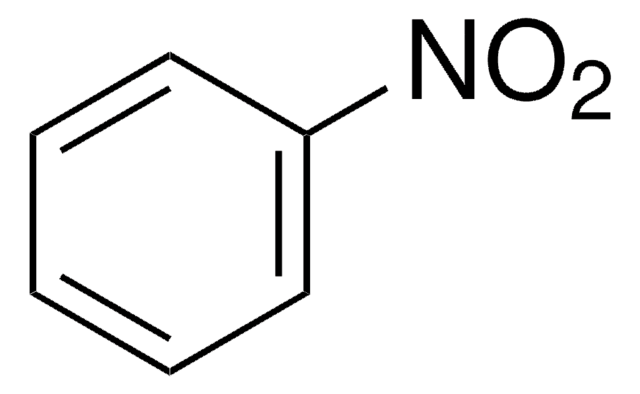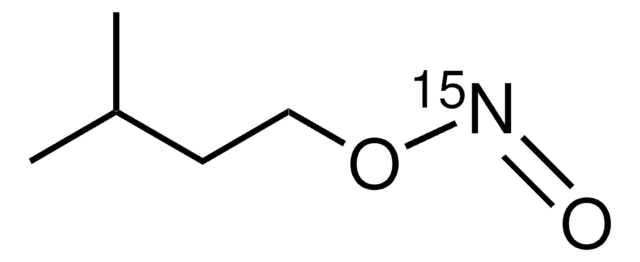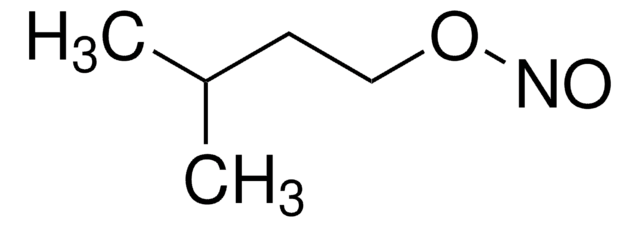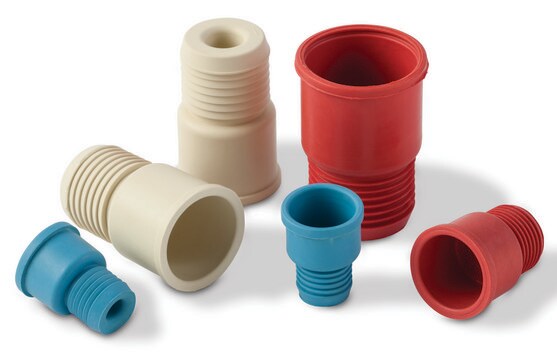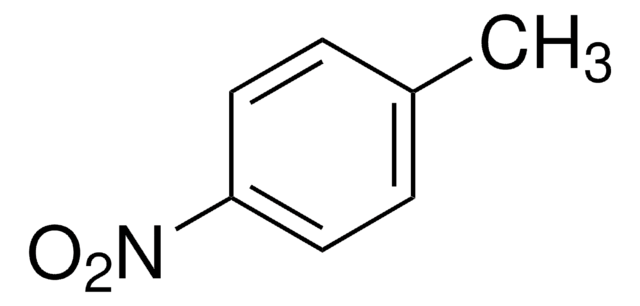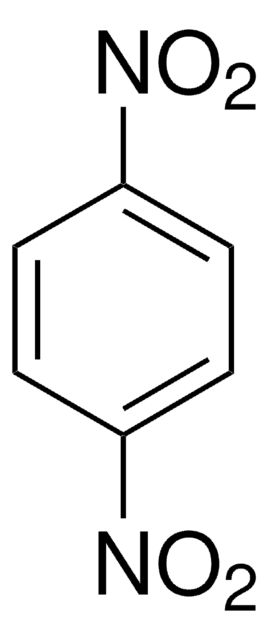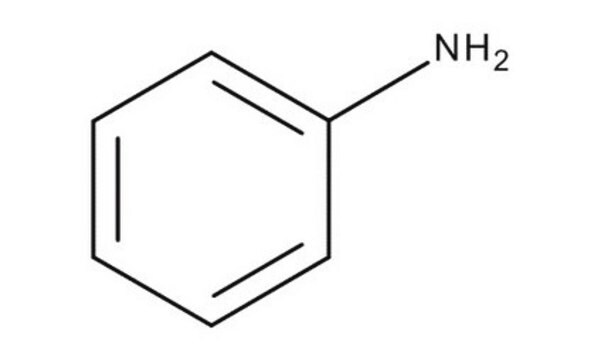N10950
Nitrobenzene
ReagentPlus®, 99%
About This Item
Produits recommandés
Qualité
reagent
Niveau de qualité
Densité de vapeur
4.2 (vs air)
Pression de vapeur
0.15 mmHg ( 20 °C)
50 mmHg ( 120 °C)
Gamme de produits
ReagentPlus®
Essai
99%
Forme
liquid
Température d'inflammation spontanée
899 °F
Limite d'explosivité
40 %
dilution
(for general lab use)
Indice de réfraction
n20/D 1.551 (lit.)
pH
8-8.5 (20 °C, 1 g/L)
pb
210-211 °C (lit.)
Pf
5-6 °C (lit.)
Densité
1.196 g/mL at 25 °C (lit.)
Chaîne SMILES
[O-][N+](=O)c1ccccc1
InChI
1S/C6H5NO2/c8-7(9)6-4-2-1-3-5-6/h1-5H
Clé InChI
LQNUZADURLCDLV-UHFFFAOYSA-N
Vous recherchez des produits similaires ? Visite Guide de comparaison des produits
Description générale
Application
Informations légales
Mention d'avertissement
Danger
Mentions de danger
Conseils de prudence
Classification des risques
Acute Tox. 3 Dermal - Acute Tox. 3 Inhalation - Acute Tox. 3 Oral - Aquatic Chronic 3 - Carc. 2 - Repr. 1B - STOT RE 1 Inhalation
Organes cibles
Blood
Code de la classe de stockage
6.1A - Combustible acute toxic Cat. 1 and 2 / very toxic hazardous materials
Classe de danger pour l'eau (WGK)
WGK 3
Point d'éclair (°F)
190.4 °F - closed cup
Point d'éclair (°C)
88 °C - closed cup
Listes réglementaires
Les listes réglementaires sont principalement fournies pour les produits chimiques. Seules des informations limitées peuvent être fournies ici pour les produits non chimiques. L'absence d'indication signifie qu'aucun des composants n'est répertorié. Il incombe à l'utilisateur de s'assurer de l'utilisation sûre et légale du produit.
EU REACH SVHC Candidate List
EU REACH Annex XVII (Restriction List)
Faites votre choix parmi les versions les plus récentes :
Déjà en possession de ce produit ?
Retrouvez la documentation relative aux produits que vous avez récemment achetés dans la Bibliothèque de documents.
Les clients ont également consulté
Notre équipe de scientifiques dispose d'une expérience dans tous les secteurs de la recherche, notamment en sciences de la vie, science des matériaux, synthèse chimique, chromatographie, analyse et dans de nombreux autres domaines..
Contacter notre Service technique